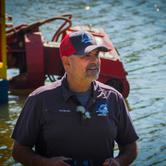How Do You Prevent Lake and Pond Erosion?
The shoreline of any pond or lake is an important barrier that helps keep the water clean and prevents it from filling up with mud and debris. In the spring, many HOA and golf course pond managers will find that the shorelines are starting to erode. Shoreline erosion is a natural process that occurs over time.
What Causes Shoreline Erosion?
Water is an incredibly destructive force. From the Colorado River carving out the Grand Canyon to glaciers carving out entire valleys, it shapes and moves the earth as it sees fit. On a much smaller scale, the water of your pond or lake routinely laps at the shoreline 24 hours a day, seven days a week. The lapping action carries small soil particles into the water, and this is on a calm day. During wet weather, rain moves huge amounts of soil from the banks and shoreline into the water. Bank erosion is the leading cause of shoreline damage. As time goes by, it chips away at the underlying soil until the entire bank slumps into the water. Fortunately, there are a few things HOA and golf course managers can do to help slow, limit, or completely prevent shoreline erosion from happening. The success of your endeavors will vary based on how much damage has occurred so far and how much work, time, and money you’re willing to invest in fixing the problem.
Here are a few things that you can do to prevent shoreline erosion:
Native Grasses and Plants—If you haven’t done so already, start planting as many native plants and grasses as your budget will allow. This is the first defense in your battle to control erosion. These native plants and grasses will form deep roots that hold the soil in place and help divert water flow into the pond or lake. Keep Animals at Bay – Livestock, pets, and even wild animals see a pond or lake as a free source of drinking water. However, many of them, such as wild deer, can weigh a few hundred pounds, and their hooves will tear up and into the soil on the shoreline. They will also see the nearby plants, grass, and vegetation as a tasty snack, thereby increasing the erosion rate. Use Rip-Rap Rock—Rip-rap rock refers to rocks and stones that range in size and shape from 5 to about 35 inches in diameter. River rock, granite, boulders, cobblestone, and fieldstone can all serve as rip-rap rock. Rip-rap helps stabilize shorelines and protects areas prone to erosion. Many HOA and golf course pond managers use it to stabilize soil slopes that tend to seep or contain poor soil. Rip-rap also discourages livestock, pets, and hooved wild animals from treading on it, as its surfaces are jagged and unsuitable for a four-legged creature weighing a few hundred pounds. Build a Berm – An earthen berm covered in grass or vegetation around your pond can also help prevent soil erosion. While it may not look very aesthetic if you build it too high, it’s a great way to channel rainwater into an area covered in rip rap-rock. Fix the Bank Slope – This method of preventing shoreline erosion is often costly and time-consuming. If your pond or lake has a steep bank with a slope greater than three feet of width for every one foot of height, it will erode over time if it’s not stabilized. Change the Soil – Changing the soil type is another costly and time-consuming way of protecting your shoreline. Sandy soil has less structural integrity and is more prone to erosion. Even the smallest of pond ripples can have a detrimental effect on sandy soil. This type of soil is very prevalent in coastal plains and desert areas. Consider changing out (or at the very least adding) a soil type that contains a fair amount of clay, which can help prevent water from eroding the soil.
Nationwide Lake and Pond Dredging
Soil erosion can also cause a nutrient overload in your body of water, leading to fish die-offs and unsightly algae outbreaks. After you’ve fixed your erosion problem, consider having your ponds dredged, as this will help remove years of organic muck from the bottom of the water and prevent an algae outbreak. At American Underwater Services, we specialize in HOA, golf courses, farms, and homeowner pond dredging. We can help you regain control over your ponds and turn them into crystal-clear water havens for fish, animals, and people alike. Call us today at (817) 377-8512 to learn more about our nationwide pond dredging and cleaning services. We can travel anywhere in the continental U.S. to help you with your dredging needs. [author_box]




